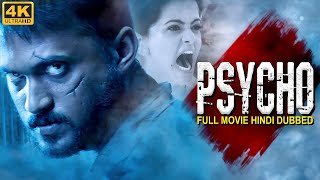📌 Basic Information
- Title: Psycho
- Director: Alfred Hitchcock
- Release Date: June 16, 1960
- Genre: Psychological Horror / Thriller
- Runtime: 109 minutes
- Rating: R (retroactively, for violence and disturbing content)
- Based on: 1959 novel by Robert Bloch (loosely inspired by real-life killer Ed Gein)

🧠 Full Storyline – Scene-by-Scene Summary
Part 1: Marion Crane’s Escape
Phoenix, Arizona. Friday Afternoon.
We meet Marion Crane, a secretary having an affair with Sam Loomis, a divorced hardware store owner. Marion wants to settle down, but they lack money.
Later, Marion is entrusted with $40,000 in cash by her boss to deposit at the bank. Tempted by the opportunity to change her life, she steals the money and goes on the run.
Part 2: A Rainy Night and the Bates Motel
Driving through storms and paranoia, Marion trades her car and continues fleeing. That night, lost in the rain, she stumbles upon the isolated Bates Motel. It’s quiet, eerie, and overlooked by a looming, gothic-style house.
Here she meets the shy, awkward proprietor: Norman Bates, who lives with his mother. Norman is polite and boyish, but something about him feels off. He invites Marion for dinner in his parlor.
Key Scene: The Parlor Conversation
Marion and Norman talk in a room filled with stuffed birds. Norman explains his life revolves around caring for his “sick” mother. When Marion suggests he put her in an institution, Norman becomes tense:
“A boy’s best friend is his mother.”
Meanwhile, the camera cuts to the house on the hill, where we overhear Norman being berated by his domineering mother.
🎶 The Shower Scene (Iconic)
Marion, guilt-ridden, decides to return the money the next morning.
But that night, while she showers…
A shadowy figure silently enters the bathroom.
Suddenly, the curtain is pulled back—and Marion is stabbed repeatedly in a violent frenzy. The scene is terrifying and masterfully edited, with screeching violins and Bernard Herrmann’s iconic score.
Marion collapses, dying slowly as the camera lingers on her lifeless eye. The killer disappears.
Norman later finds her dead and is horrified. He cleans up the evidence, places her body and car in a swamp behind the motel, and covers up the crime—protecting his mother.
Part 3: The Investigation Begins
Several days later:
- Sam Loomis and Lila Crane (Marion’s sister) grow concerned.
- Private investigator Arbogast is hired to find Marion and the stolen money.
Arbogast traces Marion’s path and finds the Bates Motel. He questions Norman, who is nervous and inconsistent.
Arbogast suspects Norman’s mother knows something.
When he sneaks into the house—he is murdered on the staircase by the same mysterious figure.
Part 4: Uncovering the Truth
With Arbogast missing, Lila and Sam investigate.
They arrive at the motel pretending to be a couple. Sam distracts Norman while Lila sneaks into the Bates house.
In the basement, she discovers something horrific:
A mummified corpse sitting in a chair—the remains of Norman’s mother.
Suddenly, Norman appears—dressed as his mother, a crazed look on his face. He attempts to kill Lila, but Sam subdues him just in time.
Part 5: The Final Reveal
At the police station, a psychiatrist explains:
- Norman killed his mother and her lover years ago.
- Unable to cope with guilt, he developed a split personality—becoming both Norman and “Mother.”
- Whenever Norman felt desire (like toward Marion), “Mother” would take over and kill the threat.
- The dominant personality became “Mother,” completely taking over Norman’s mind.
“The mind of Norman Bates no longer exists. Only Mother.”
In the final shot, Norman sits alone in a cell, fully consumed by his mother’s persona. He smiles eerily as he thinks:
“They’ll see I couldn’t hurt a fly.”
Meanwhile, Marion’s car is pulled from the swamp.
The film ends.
🧩 Key Characters
- Norman Bates (Anthony Perkins): Shy, boyish motel owner with a dark, fractured psyche.
- Marion Crane (Janet Leigh): Embezzler-turned-victim; the supposed “protagonist” who dies early.
- Lila Crane (Vera Miles): Marion’s determined sister.
- Sam Loomis (John Gavin): Marion’s boyfriend.
- Arbogast (Martin Balsam): Private detective who gets too close to the truth.
- Mother: Norman’s internalized second personality, manifesting as a jealous, homicidal figure.
🧠 Themes and Symbolism
- Duality of Human Nature: Norman is both gentle and monstrous.
- Guilt and Madness: Marion’s guilt contrasts with Norman’s mental collapse.
- Voyeurism: Norman’s peeping suggests repressed sexuality and distorted views of women.
- Freud’s Theory of the Id, Ego, and Superego: Norman represents a fractured identity dominated by his subconscious desires.
🎥 Filmmaking Innovations
- First major film to kill its leading lady halfway through.
- Invented modern slasher genre tropes.
- Black-and-white to avoid showing gore (and to satisfy censors).
- Masterful use of music, editing, and camera work to build suspense.
- Used marketing gimmicks, including:
- “No one will be admitted after the film begins.”
- Trailers narrated by Hitchcock himself.
🏆 Legacy & Impact
- Academy Award Nominations (including Best Supporting Actress for Janet Leigh and Best Director for Hitchcock).
- Selected for preservation by the U.S. National Film Registry.
- Launched a massive franchise:
- Psycho II, III, IV (sequels)
- Bates Motel (TV prequel)
- Psycho (1998) – shot-for-shot remake by Gus Van Sant
- Influenced filmmakers like Brian De Palma, David Lynch, and Quentin Tarantino.
- Inspired entire horror subgenres: slasher films, split personality thrillers, and voyeuristic suspense.
💬 Famous Quotes
- “We all go a little mad sometimes.”
- “A boy’s best friend is his mother.”
- “They’ll say I wouldn’t even harm a fly.”
